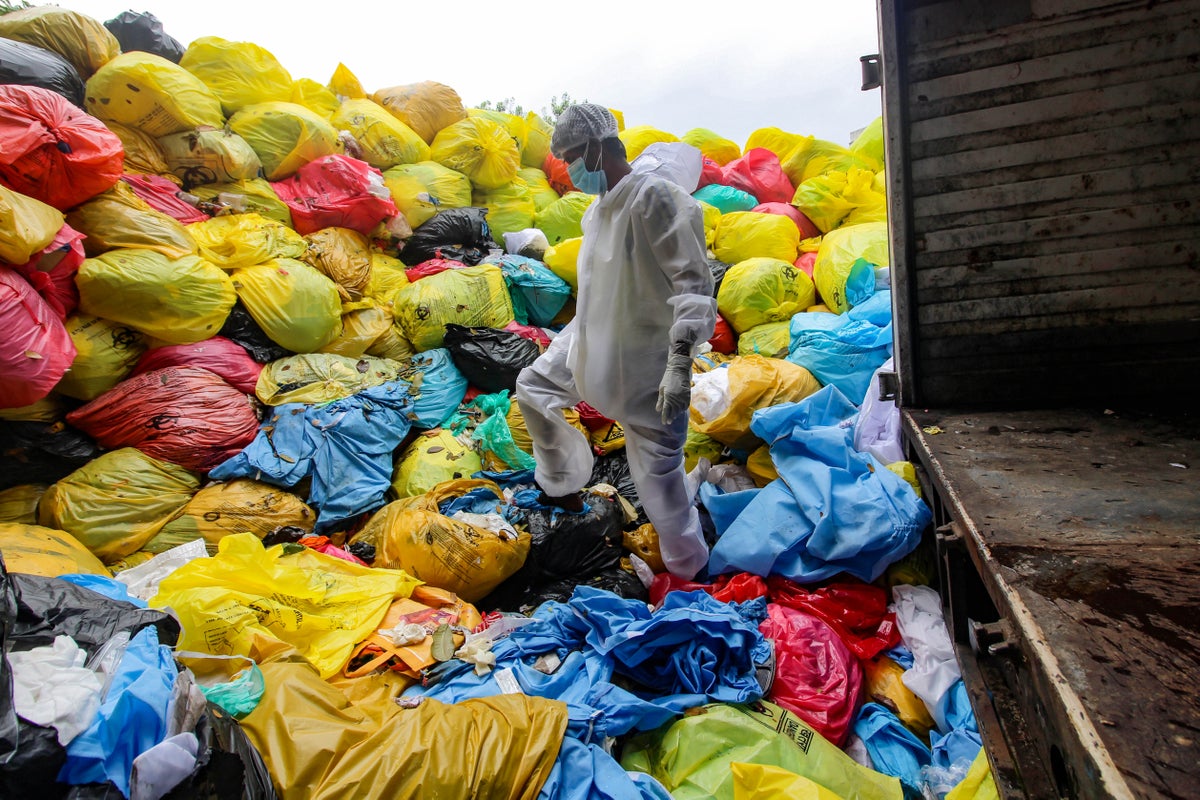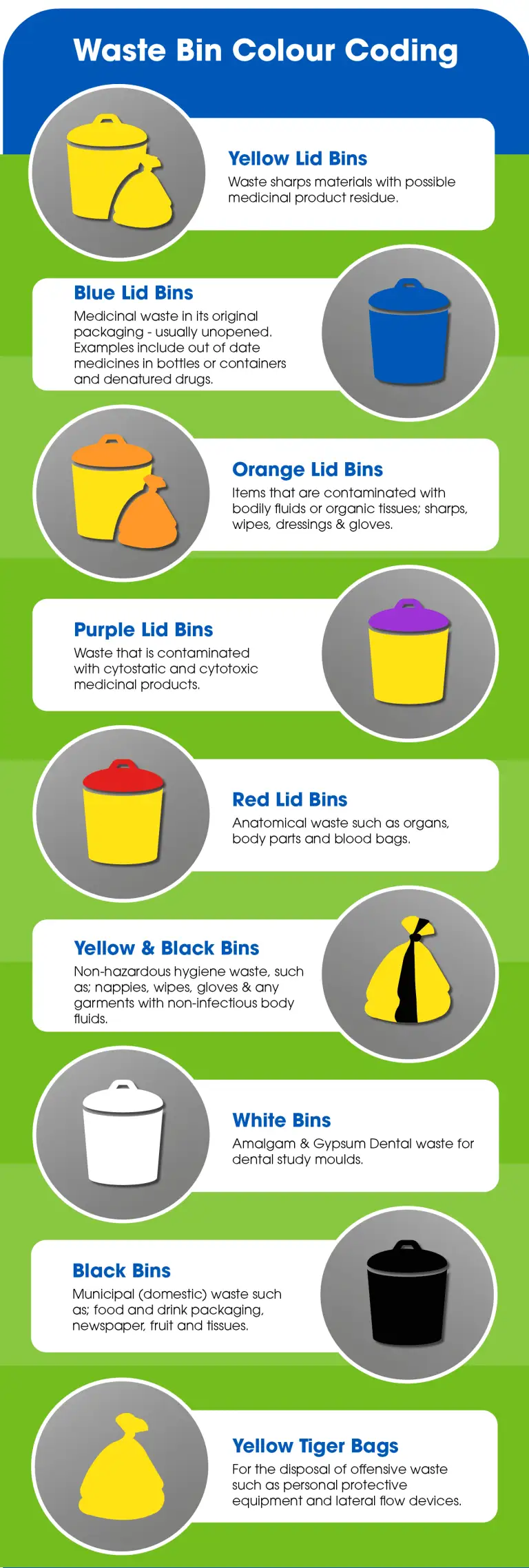Compliance and Rules for Medical Garbage Disposal
Compliance and guidelines for medical garbage disposal play a critical function in making sure the security and well-being of both medical care experts and the general public. Correct administration of medical waste is important to avoid the spread of infections, shield the environment, and preserve public health. This calls for adherence to particular standards and methods stated by governing firms and bodies. These guidelines include numerous facets, including the category and segregation of medical waste, correct storage space and dealing with procedures, in addition to transport and disposal techniques. By complying with these regulations, medical care centers can lessen the danger of contamination and prospective injury to individuals and the atmosphere. This article will check out the significance of compliance and supply an overview of the key guidelines regulating clinical waste disposal.
Importance of Compliance
The importance of compliance with policies for medical waste disposal can not be overemphasized. Correct disposal of clinical waste is critical for guaranteeing the security and well-being of medical care employees, people, and the basic public. Clinical waste, that includes items such as utilized needles, polluted gloves, and biomedical waste, can position serious health dangers if not managed and disposed of appropriately.
Conformity with guidelines makes sure that clinical waste is taken care of in such a way that decreases the potential for exposure to transmittable diseases and hazardous compounds - medical waste disposal service. It aids protect against the spread of infections, such as HIV, liver disease B and C, and various other bloodborne microorganisms. Compliance likewise plays a crucial duty in securing the setting by stopping contamination of water resources, dirt, and air
Failure to follow laws can result in severe effects for health care centers, including fines, lawsuit, and damage to their track record. Additionally, non-compliance may jeopardize the health and wellness of medical care workers, people, and the area.
Conformity with guidelines for clinical garbage disposal needs adherence to details standards and procedures. These might consist of proper segregation, packaging, labeling, and storage space of clinical waste. It also involves utilizing accepted disposal techniques, such as landfilling, incineration, or autoclaving, relying on the sort of waste.
Regulatory Agencies and Bodies
Regulative companies and bodies play an important role in overseeing compliance with guidelines for clinical garbage disposal. These organizations are in charge of setting procedures, guidelines, and standards to guarantee the secure and proper handling of clinical waste. They keep an eye on and apply conformity to safeguard public wellness and the setting.
Among the most famous regulatory agencies in the United States is the Environmental Security Firm (EPA) The EPA is in charge of regulating the storage space, transportation, treatment, and disposal of medical waste. They develop guidelines for waste generators, transporters, and therapy facilities to comply with, guaranteeing that all necessary precautions are required to prevent the spread of conditions and contamination.
An additional important regulative body is the Occupational Safety And Security and Health Management (OSHA) OSHA sets regulations and standards to secure employees from work risks, including those related to clinical waste. WasteX Medical Waste Disposal. They offer standards for the safe handling and disposal of clinical waste to secure staff members in healthcare centers
In addition to these federal firms, individual states additionally have their own regulatory bodies that supervise clinical waste disposal. These companies may have their very own particular guidelines and requirements that should be adhered to.

Category and Partition of Medical Waste
To make sure correct monitoring of medical waste, it is important to categorize and segregate it according to developed procedures and standards. medical waste disposal service. Category and segregation play a crucial duty in minimizing the threat of infection, shielding the atmosphere, and making certain the safety and security of healthcare workers and the public
Clinical waste is identified into different categories based upon its possible threat degree. These categories consist of transmittable waste, pathological waste, sharps waste, pharmaceutical waste, chemical waste, and contaminated waste. Each category needs details handling, transport, disposal, and storage approaches to decrease the risk of exposure and contamination.
Partition of medical waste involves dividing different sorts of waste at the source. This procedure ensures that waste with various threat levels is not mixed, decreasing the capacity for cross-contamination and making disposal treatments more reliable. Proper segregation is achieved through making use of color-coded containers and labels, which help healthcare employees and waste management personnel identify and handle each kind of waste properly.
In enhancement to category and segregation, healthcare centers must additionally comply with regional, state, and government laws relating to clinical waste monitoring. These guidelines outline details needs for storage, transportation, treatment, and final disposal of clinical waste, making certain conformity and keeping public wellness and security.
Correct Storage and Managing Treatments
Correct storage and managing procedures play a crucial duty in guaranteeing the safe and certified management of medical waste. Clinical waste, that includes things such as utilized syringes, contaminated gloves, and expired drugs, can present major wellness and ecological risks otherwise managed properly. It is important for health care centers and various other generators of clinical waste to apply rigorous storage and taking care of protocols.
To start with, medical waste needs to be stored in sturdy, leak-proof containers that are specifically developed for this objective. These containers must be classified with the universal biohazard icon and the words "medical waste" to clearly indicate the contents. Additionally, the containers should be maintained firmly closed to protect against any kind of possible leakage or splilling.
Moreover, it is very important to segregate various kinds of medical waste to stop cross-contamination. Sharps, such as needles and scalpels, ought to be saved in puncture-resistant containers to decrease the danger of injuries - WasteX Medical Waste Disposal. Chemical waste, such as disinfectants and solvents, need to be stored separately from other sorts of medical waste to stop chain reactions or unsafe direct exposures

Transport and Disposal Methods
Medical care centers should ensure the risk-free transportation and appropriate disposal of their clinical waste to abide by regulations and secure public health. Transport and disposal approaches play an essential duty in stopping the spread of transmittable illness and decreasing the ecological effect of clinical waste.
To deliver clinical waste, medical care centers should use puncture-resistant and watertight containers that are labeled with the biohazard symbol. These containers need to be securely secured to stop any type of leak during transportation. In addition, healthcare centers ought to establish methods for the transportation process, including using committed lorries and qualified employees.
As soon as the clinical waste reaches the disposal facility, it undergoes various approaches of therapy. One typical approach is incineration, which entails burning the waste at high temperatures to damage microorganisms and decrease the volume of waste. One more method is autoclaving, which makes use of heavy steam and pressure to decontaminate the waste. After treatment, the waste is normally sent to a garbage dump or a waste-to-energy center for last disposal.
It is necessary for health care facilities to deal with certified and allowed waste management companies to make certain appropriate transport and disposal of medical waste. These business have the expertise and resources to take care of clinical waste securely and in compliance with laws.
Final Thought
In final thought, conformity with regulations for clinical waste disposal is of utmost significance to guarantee public health and wellness and safety. In general, adherence to compliance and guidelines is necessary to successfully take care of clinical waste.
Medical waste, which includes things such as used needles, infected handwear covers, and biomedical waste, can posture significant health and wellness threats if not dealt with and disposed of appropriately.
These classifications consist of contagious waste, pathological waste, sharps waste, pharmaceutical waste, chemical waste, and contaminated waste.Partition of medical waste involves separating various kinds of waste at the resource. Correct partition is accomplished via the usage of color-coded tags and containers, which help healthcare view it employees and waste management workers handle each kind and recognize of waste appropriately.
Chemical waste, such as disinfectants and solvents, need to be kept individually from various other types of clinical waste to avoid dangerous direct exposures or chemical reactions.